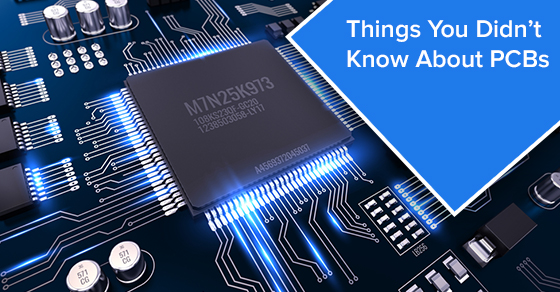10 Things You Didn’t Know About PCBs
Printed circuit boards (PCBs) are an essential part of the creation of any electronic product. To help you understand how important PCBs are, below are ten things you didn’t know about them.
-
They’ve been around since the 1930s.An Austrian inventor named Paul Eisler created the PCB while working on a radio. He fled Vienna in 1936 to escape persecution by the nazis and went to London. While in the UK he couldn’t find a job, which led him to spend his time inventing, and thus, the printed circuit board came to be.
-
PCBs aren’t actually green. Printed circuit boards may look green but they are not. Green is, in fact, the colour of the solder mask, the thin layer of polymer that protects the PCB from oxidation.
-
Everything has a PCB. Most of the electronics you own have a printed circuit board. Everything from your computers to your smartphone to your microwave contains PCBs. Basically, if it uses electricity to function, it has a printed circuit board.
-
PCBs don’t use wires. To transmit energy from one component to another, PCBs use tracers instead of wires. The tracers are made of copper to ensure that energy gets to where it needs to go.
-
Personalization is allowed. When designing a PCB, most people stick to the script because it is more cost effective. However, for a price you can personalize a printed circuit board to whatever specifications you need.
-
They’re shrinking. As our electronics get smaller, so do PCBs. Technology moves fast, and PCB design has to keep up with it, resulting in smaller, more efficient boards.
-
They have many components. PCBs contain several components, and each of those components has its own properties. PCB components include resistors, capacitors, inductors, relays, batteries, ruses, potentiometers and transformers.
-
The white parts are called the silkscreen. On a PCB there are white etchings on top of the solder mask. This is called the silkscreen because that was the process used for printing back in the day. Nowadays, printing is done digitally with inkjet printers.
-
Surface mount technology is becoming the norm. SMT is quickly turning into the favourite manufacturing technique to create PCBs. Instead of using through-hole components, SMT glues the components onto pads on the surface of the board.
-
Physics plays a key role in their design. Ohm’s Law, a facet of physics, outlines the relationship between current, resistance and voltage. When designing a PCB, this must be kept in mind, because the electrical current must be proportional to voltage and resistance. If you don’t follow the laws of physics, you won’t be able to design your board.
Sources:

